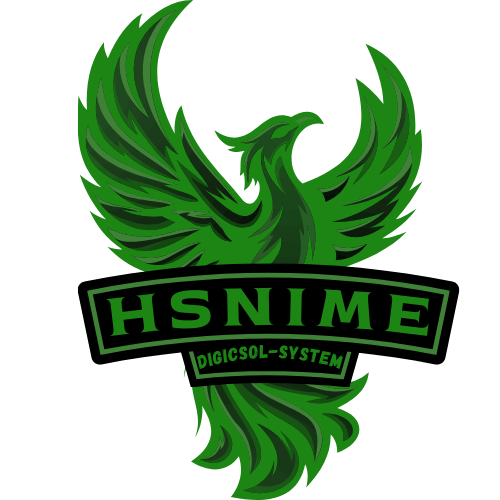Contents
- 1 Introduction
- 2 Why Southall Health and Safety Matters in 2025
- 3 Understanding the Legal Framework
- 4 Common Workplace Hazards in Southall
- 5 Developing a Safety-First Culture
- 6 Training and Certification in Southall
- 7 Employer Responsibilities
- 8 Employee Responsibilities
- 9 Sector-Specific Safety Considerations
- 10 Digital Tools for Compliance and Monitoring
- 11 Risk Assessment and Hazard Control
- 12 Health Surveillance and Wellbeing
- 13 Emergency Preparedness and Response
- 14 Incident Reporting and Investigation
- 15 Environmental Safety and Sustainability
- 16 Local Resources and Support in Southall
- 17 Frequently Asked Questions (FAQs)
- 17.1 What are the legal health and safety obligations for Southall employers?
- 17.2 How often should safety audits be conducted?
- 17.3 Where can I find accredited health and safety training in Southall?
- 17.4 What penalties apply for non-compliance in Southall?
- 17.5 Can I use online tools to manage health and safety?
- 17.6 Is mental health included in workplace safety?
- 17.7 What support is available for small businesses in Southall?
- 17.8 What is the first step for new businesses in Southall?
- 18 Conclusion
Introduction
In 2025, the emphasis on workplace safety and regulatory compliance continues to grow across industries in the UK, and Southall is no exception. As a vibrant, fast-developing area in West London, Southall is home to various businesses—from manufacturing and warehousing to food processing and retail. Understanding and implementing proper health and safety measures is not only a legal obligation but also a crucial element of business success.
This comprehensive guide explores the key aspects of Southall health and safety, including compliance requirements, best practices, training programs, local resources, and actionable tips for creating safer work environments.
Why Southall Health and Safety Matters in 2025
Southall’s diverse and growing workforce presents unique challenges and opportunities when it comes to maintaining workplace safety. Ensuring Southall health and safety compliance not only protects employees but also enhances productivity, reduces operational costs, and mitigates legal risks.
Key Drivers of Safety Initiatives in Southall:
- Increasing HSE (Health and Safety Executive) inspections
- Rise in workplace injury claims
- Introduction of stricter UK health and safety regulations
- Demand for multilingual safety training programs
Understanding the Legal Framework
UK Health and Safety Law Overview
The foundation of occupational safety in the UK is the Health and Safety at Work etc. Act 1974, which places a legal duty on employers to ensure the health, safety, and welfare of their employees.
Key Regulations That Affect Southall Businesses:
- Regulations for the Management of Health and Safety at Work (1999)
- Workplace (Health, Safety and Welfare) Regulations 1992
- Control of Substances Hazardous to Health (COSHH) 2002
- Reporting of Injuries, Diseases and Dangerous Occurrences Regulations (RIDDOR) 2013
Compliance Checklist for Southall Businesses
To maintain Southall health and safety standards, businesses must:
- Conduct regular risk assessments
- Provide health and safety training
- Maintain safe working conditions
- Appoint competent persons for health and safety duties
- Ensure first aid arrangements
- Record and report workplace accidents (RIDDOR)
- Create a health and safety policy if they employ five or more people
Common Workplace Hazards in Southall
Due to the industrial diversity in Southall, the following hazards are most commonly encountered:
1. Manual Handling Injuries
Industries such as logistics, construction, and food services often involve lifting, carrying, and pushing, leading to musculoskeletal disorders.
2. Slips, Trips, and Falls
Falls in workplaces, warehouses, and restaurants are often caused by wet flooring, uneven surfaces, and inadequate lighting.
3. Chemical Exposure
Cleaning agents, industrial solvents, and other hazardous materials pose risks to employees if not handled correctly.
4. Fire Hazards
Improper electrical installations or lack of fire safety training often result in preventable incidents.
5. Noise Pollution
Particularly in manufacturing units and workshops, excessive noise levels can damage hearing and concentration.
6. Electrical Hazards
Faulty wiring, improper use of equipment, and lack of PAT (Portable Appliance Testing) increase electrical incident risks.
Developing a Safety-First Culture
Creating a workplace where safety is a shared value involves more than compliance. It requires a proactive approach, employee engagement, and consistent reinforcement.
Strategies for Building a Safety Culture:
- Appoint safety champions or officers
- Hold regular toolbox talks
- Use visual safety cues and posters
- Encourage reporting of near misses
- Conduct monthly safety audits
- Reward safe behavior
Training and Certification in Southall
Training is at the heart of maintaining Southall health and safety compliance. Many accredited providers in Southall offer courses tailored to industry-specific needs.
Popular Courses:
- Health and Safety Level 1, 2, and 3
- First Aid at Work
- Fire Marshal Training
- COSHH (Control of Substances Hazardous to Health)
- Manual Handling
- Working at Height
- Asbestos Awareness
- Construction Skills Certification Scheme (CSCS)
Where to Get Trained:
- Local colleges and adult education centers
- Private safety training firms
- Online platforms offering CPD-accredited courses
Employer Responsibilities
Employers play a crucial role in fostering safe workplaces. Key responsibilities include:
- Conducting and documenting risk assessments
- Ensuring protective gear (PPE) is available and used
- Offering ongoing health and safety training
- Displaying safety notices in multiple languages, if needed
- Reviewing policies annually
- Consulting with employees or safety representatives
Employee Responsibilities
Employees must also contribute to workplace safety. Their responsibilities include:
- Following safety protocols and training
- Wearing PPE as required
- Reporting hazards or unsafe conditions immediately
- Participating in safety meetings and training
- Cooperating with health and safety officers
Sector-Specific Safety Considerations
Construction
With major redevelopment projects in Southall, construction sites must be rigorously monitored. Common practices include site induction, fall protection systems, and scaffolding checks.
Manufacturing and Warehousing
Noise control, machinery safeguards, and proper storage practices are essential for worker safety.
Hospitality and Retail
Training in food hygiene, emergency evacuation, and safe equipment use is crucial in these sectors.
Education and Childcare
Schools and nurseries must maintain stringent child safety measures, such as secure play areas and infection control protocols.
Transportation and Delivery
With a growing demand for courier and delivery services, driver fatigue, vehicle safety checks, and route risk assessments are becoming increasingly important.
Digital Tools for Compliance and Monitoring
Modern technologies can significantly improve Southall health and safety practices.
Recommended Tools:
- Incident tracking software
- Mobile safety inspection apps
- Learning management systems (LMS) for safety training
- Digital PPE checklists and audits
Benefits of Digitalization:
- Real-time data access
- Automated alerts for compliance deadlines
- Streamlined documentation
- Easier reporting to regulatory bodies
Risk Assessment and Hazard Control
Steps to Perform a Risk Assessment:
- Identify potential hazards
- Determine who might be harmed and how
- Evaluate the risks and implement control measures
- Record findings and actions taken
- Review and update assessments regularly
Types of Control Measures:
- Engineering controls (e.g., machine guards)
- Administrative controls (e.g., training and policies)
- PPE (e.g., gloves, masks, helmets)
Health Surveillance and Wellbeing
When is Health Surveillance Required?
If employees are exposed to:
- Noise
- Vibration
- Asbestos
- Hazardous substances (e.g., chemicals, fumes)
Promoting Employee Wellbeing:
- Mental health support programs
- Ergonomic workspaces
- Access to occupational health services
- Work-life balance initiatives
Emergency Preparedness and Response
Key Components of Emergency Plans:
- Evacuation procedures
- Fire safety drills
- First aid arrangements
- Communication plans during emergencies
- Roles and responsibilities defined in advance
Common Emergency Equipment:
- Fire extinguishers
- First aid kits
- Defibrillators (AEDs)
- Emergency lighting
Incident Reporting and Investigation
Why Report Accidents?
- Identify root causes
- Prevent future incidents
- Fulfill legal obligations under RIDDOR
How to Conduct an Investigation:
- Secure the scene
- Collect evidence (photos, witness statements)
- Analyze root cause
- Implement corrective actions
- Document and share findings
Environmental Safety and Sustainability
Integrating Safety with Sustainability:
- Reducing chemical waste
- Promoting green cleaning practices
- Installing energy-efficient safety equipment
- Minimizing workplace pollution
Relevant Legislation:
- Environmental Protection Act 1990
- Waste Management Licensing Regulations
Local Resources and Support in Southall
Southall Jobcentre Plus
Offers employer advice and recruitment support, including safety compliance assistance.
Local Councils and Business Forums
Regular workshops and community support programs are available to SMEs.
Southall Chamber of Commerce
Provides networking, training, and regulatory guidance for small businesses.
Safety Consultants and Freelance Advisors
Southall has a growing number of independent health and safety consultants who can provide audits, training, and policy support.
Frequently Asked Questions (FAQs)
What are the legal health and safety obligations for Southall employers?
Employers must ensure a safe working environment, conduct risk assessments, and provide safety training under the UK Health and Safety at Work Act.
How often should safety audits be conducted?
Ideally, safety audits should be conducted monthly. However, frequency can vary based on industry type and workplace risk levels.
Where can I find accredited health and safety training in Southall?
Training can be found at local colleges, private firms, and online platforms offering CPD or IOSH certification.
What penalties apply for non-compliance in Southall?
Fines can reach unlimited amounts, with possible imprisonment for severe breaches of health and safety law.
Can I use online tools to manage health and safety?
Yes, digital tools can streamline inspections, training, and reporting, ensuring better Southall health and safety compliance.
Is mental health included in workplace safety?
Yes. Modern health and safety practices emphasize mental wellbeing alongside physical safety. Employers are encouraged to provide mental health resources and support.
What support is available for small businesses in Southall?
Local councils, business forums, and Jobcentre Plus offer guidance, workshops, and funding options for health and safety improvements.
What is the first step for new businesses in Southall?
New businesses should start by conducting a thorough risk assessment and appointing a competent person to manage health and safety responsibilities.
Conclusion
In addition to being required by law, putting Southall health and safety first in 2025 is a wise business move. With increasing scrutiny, diverse workforces, and evolving risks, companies must adopt proactive, tech-driven, and people-first approaches to ensure safety. By staying informed, training effectively, and leveraging local resources, Southall businesses can thrive while keeping their teams safe and healthy.
Final Tip: Review and update your safety policies at least once a year, involve your employees in safety discussions, and stay informed about the latest health and safety regulations relevant to your industry.

Harper Leigh is a dedicated writer at hsnime.co.uk, where she crafts engaging and insightful content on a wide range of topics. With a passion for storytelling and connecting with readers, Harper aims to inspire, inform, and entertain through her articles.






